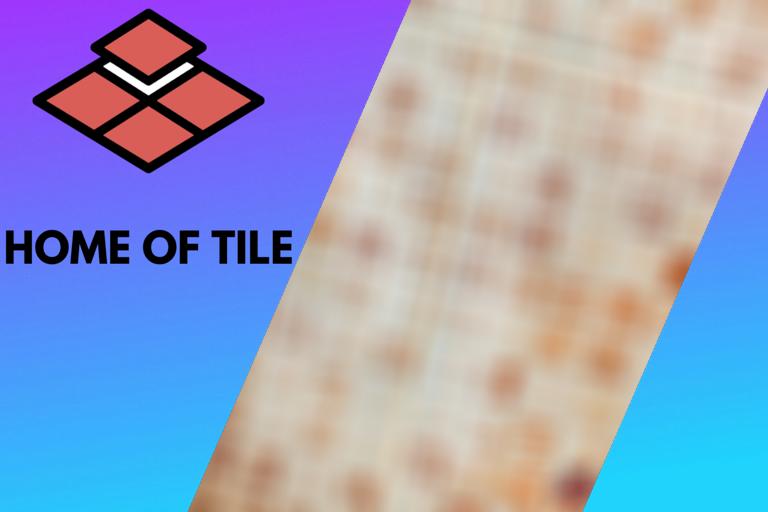How To Clean Grout on Tile Floors With Hydrogen Peroxide
When cleaning our tiles, we want to ensure we get the most profound and longest-lasting clean possible. A longer-lasting clean means less time spent cleaning, and no one enjoys lengthy grout-cleaning sessions. There are many products you can use for cleaning grout, but hydrogen peroxide is one of the best options you can choose.
Hydrogen peroxide is excellent for cleaning the grout on your tile floors. It is a natural disinfectant that will brighten and whiten your grout. You can mix it with baking soda, dish soap, or lemon juice and cream of tartar.

In this article, we will inform you on how to clean grout using hydrogen peroxide. We will also share some of our favorite DIY recipes to help give your home the freshest and cleanest feeling possible!
Contents
Cleaning Your Dirty Grout on Tile Floors
When was the last time you gave your grout a good cleaning? If you cannot remember or your answer is never, then your grout is overdue for a deep and thorough cleaning! And yes, even though you recently cleaned your tile floors, this does not mean your grout is also clean.
Grout requires specific cleaning and care to keep it looking brand new for as long as possible. Is grout cleaning most people’s least favorite cleaning task? Without a doubt, yes, it is. But is it worth it once it is done? Absolutely!
You can use several homemade cleaning solutions and tools to clean your grout. Most of these ingredients and tools you might already have at your home, so making them will save you money!
Here are some of our favorite DIY hydrogen peroxide cleaning solutions.
● Hydrogen Peroxide and Baking Soda
Hydrogen peroxide and baking soda are a powerhouse cleaning duo that is a popular choice amongst cleaning enthusiasts. Hydrogen peroxide brightens, disinfects, and removes discoloration. Baking soda removes hard water buildup and challenging stains.
To make this mixture, you will need:
- ½ cup (81.5 g) of baking soda
- ¼ cup (59 ml) of hydrogen peroxide.
Simply do the following to clean your grout:
- Step 1. Make the mixture: In a container, add the baking soda first, then the hydrogen peroxide, and shake.
- Step 2. Apply on the grout: Spray or pour this mixture onto your grout and let sit for an hour.
- Step 3. After an hour scub: Once an hour has passed, use a toothbrush or scrub brush to get rid of any discoloration or stains that need some extra care.
- Step 4. Wipe the mixture: Wipe the mixture away and reveal that beautiful, bright grout!
● Hydrogen Peroxide and Dish Soap
For this mixture, you will want to use:
- one tablespoon (15 ml) of dish soap (any brand will do)
- one cup (236 ml) of hydrogen peroxide
- one cup (236 ml) of hot water.
Once you have these ingredients, follow these simple steps to make the mixture:
- Step 1. Mix the ingredients: Mix these ingredients thoroughly in a large bottle.
- Step 2. Apply the mixture: Once thoroughly mixed, apply the solution to the grout and let it sit for 15 minutes. This mixture is most effective when it is allowed to soak into the grout. This is when the bacteria and mold start to die off.
- Step 3. Scrub: If you notice your solution drying out, start scrubbing it with your toothbrush or other cleaning brush.
- Step 4. Wipe away: Once the mixture has been washed away, wipe down your grout with a rag to ensure it is completely dry.
● Hydrogen Peroxide, Lemon Juice, and Cream of Tartar
For this homemade cleaning product, you will need:
- a bottle of hydrogen peroxide,
- some lemon juice
- two teaspoons (8.37 g) of cream of tartar.
This is a two-step cleaning solution, so it will take a bit more time and muscle than the others we recommended.
- Step 1. Mix the cream tartar and lemon juice: You will want to mix the cream of tartar with the lemon juice until they make a thick paste with a runny toothpaste texture.
- Step 2. Apply the hydrogen peroxide: First, apply the hydrogen peroxide to your grout. Scrub it into the grout using a stiff-bristled cleaning brush. Rinse when you are done.
- Step 3. Apply the mixture: Apply the homemade mixture to the grout and scrub it using the same cleaning brush. Put some muscle into it—the extra strength will help it achieve a more profound and brighter clean. After scrubbing, let the mixture sit for another 10 to 15 minutes.
- Step 4. Rinse and wipe: Rinse and wipe dry. Repeat this process until your grout has reached your desired level of brightness.
Can I Use Hydrogen Peroxide on Any Grout Type?
There are three different types of grout that you can have in your home. Each is used for a divergent purpose, has a different consistency, and reacts differently to cleaning chemicals.
Hydrogen peroxide is considered to be a neutral but powerful cleaning product, and it has many versatile uses. Some people use it to whiten their teeth, hair, and nails. Others use it in homemade cleaning solutions because of its deodorizing, disinfecting, and sanitizing properties.
However, depending on the type of grout, you’ll have to take different measures for cleaning with hydrogen peroxide.
● Epoxy Grout
Epoxy grout is the most common type you will find in your home. It is used in areas exposed to water, like your bathroom, kitchen, mudroom, and outdoor rooms.
Cleaning professionals consider this grout the easiest to clean. Because of its tolerance for water, you can use many types of cleaning products on it, and hydrogen peroxide is one of them.
● Sanded Grout
Sanded grout is a gritty grout that is used for larger flooring projects in high-traffic areas of your home. It is not waterproof unless you make it watertight, so it’s not recommended for areas where it can be exposed to water.
Because of its porous nature, you must be careful with what products you use to clean this type of grout.
However, cleaning experts say it is safe to use hydrogen peroxide on this type of grout as long as you mix it with baking soda.
● Unsanded Grout
Unsanded grout is similar in consistency to sanded grout, but it does not have the grit that sanded grout does. The lack of grit makes this grout more straightforward to clean than sanded grit, but it’s not as easy to clean as epoxy grout.
Hydrogen peroxide is perfectly safe to use on unsanded grout.
Conclusion
Now you know all the DIY methods for cleaning your grout on a tile floor using hydrogen peroxide. We hope you found this information to be helpful. May your grout never be dirty again!







